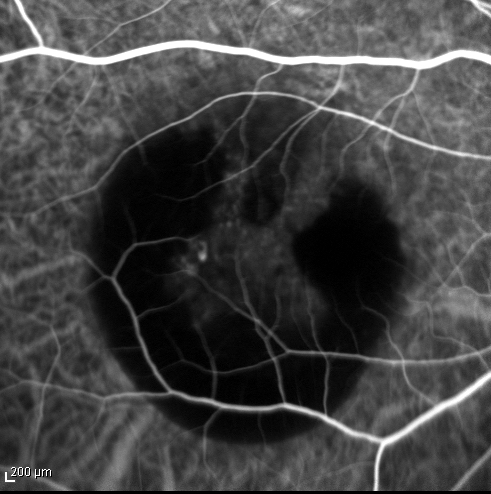- On this page: What Does My Doctor See?
Indocyanine green angiography (ICGA) is a diagnostic test that involves taking photographs of the blood vessels in the eye with the help of a contrast dye. Indocyanine is a green dye that works with infrared light and is visualized with a special digital camera.
These images can help evaluate or detect serious eye conditions such as:
During these exams, the patient’s pupils are dilated with eye drops. The contrast dye is then injected, usually into a vein in the patient’s arm. The dye travels to the eye within a few seconds and highlights the blood vessels for the camera. Once the dye is injected, multiple photographs are taken over several minutes.
These tests are considered safe for the vast majority of patients. It is possible to have a mild reaction to the dye and develop symptoms including itching, nausea, or a rash. More serious reactions are uncommon.
Patients with an iodine or shellfish allergy should inform the doctor since indocyanine green is contraindicated in these cases.

Your doctor can evaluate the health of the retina using this imaging technology. ICGA allows your doctor to detect diseases of the retina at early stages and has made timely intervention possible for a number of retinal conditions.
ICGA may be required intermittently to assess a patient’s response to treatment or need for further therapy.